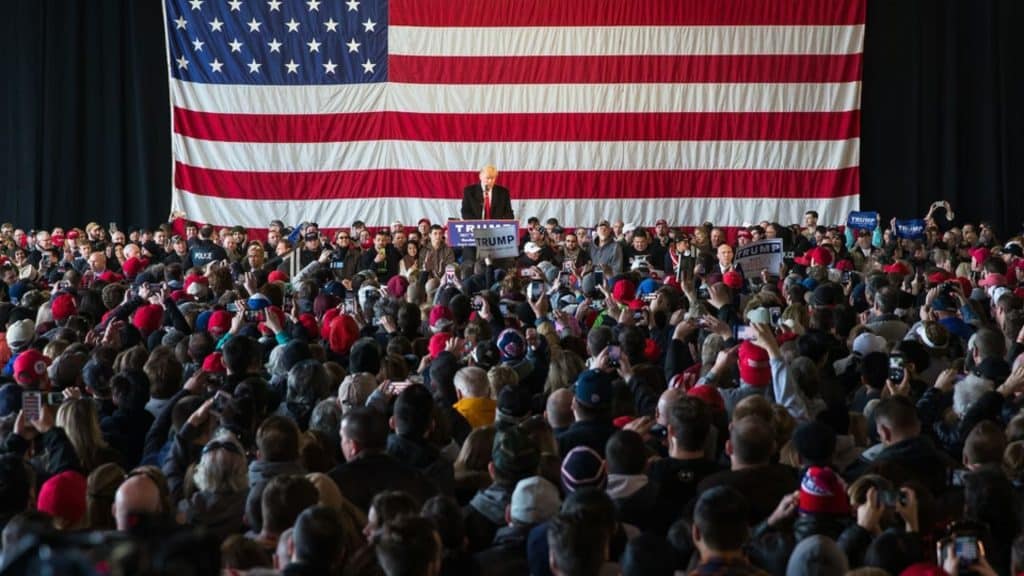What makes ordinary citizens more powerful than wealthy donors in political campaigns?
Grassroots campaigning turns neighborhoods into political powerhouses through volunteer networks and personal connections.
This approach begins at the community level and builds upward, utilizing door-to-door conversations rather than expensive media buys.
Local volunteers become the driving force behind candidate success stories across America. These campaigns demonstrate that genuine relationships often outweigh the value of advertising budgets.
From organizing strategies to overcoming financial challenges, grassroots movements continue to shape election outcomes nationwide.
In this blog, I’ll let you know exactly how grassroots campaigning works and why it remains effective in modern U.S. elections.
What Is Grassroots Campaigning?
Grassroots campaigning involves ordinary citizens organizing at the local level to support political candidates or causes. These campaigns start from the bottom up rather than top down.
Volunteers provide the foundation for these collective efforts. They work in their neighborhoods, schools, and community centers. Local people connect with one another about shared concerns.
These campaigns rely on personal relationships and direct contact. Door-to-door visits, phone calls, and community meetings build trust. People prefer listening to neighbors instead of unfamiliar political figures.
Small donations and volunteer time fuel grassroots movements. Citizens contribute what they can afford. This approach makes campaigns more accessible to candidates without wealthy backers or corporate sponsors.
Why is Grassroots Campaigning Effective in US Elections?

Grassroots campaigning is effective because it fosters genuine connections between voters and candidates. People value conversations with neighbors more than paid TV ads.
Local volunteers focus on community concerns that truly matter to residents. This personal approach creates stronger voter loyalty than mass marketing.
Key reasons grassroots campaigns succeed:
- Higher voter turnout happens when people get personal reminders to vote.
- Cost-effective outreach uses volunteers instead of expensive advertising campaigns.
- Authentic messaging comes from real people sharing genuine community experiences.
- Local credibility builds because neighbors already trust each other.
- The targeted approach focuses on specific areas where supporters actually live.
The personal touch makes all the difference in close elections. When someone you know and respect asks for your vote, you’re more likely to listen and participate in the democratic process.
Key Strategies Used in Grassroots Campaigns
Grassroots campaigns use proven methods to connect with voters at the community level. These strategies focus on building personal relationships and trust.
| Strategy | Description | Impact |
|---|---|---|
| Door-to-door canvassing | Volunteers visit homes to talk directly with voters | High personal connection and voter identification |
| Phone banking | Supporters make calls to registered voters in target areas | Wide reach with personal touch |
| Community events | Town halls, barbecues, and local gatherings with candidates | Face-to-face interaction in comfortable settings |
| Volunteer recruitment | Training local residents to become campaign advocates | Multiplies outreach capacity exponentially |
| Social media organizing | Using Facebook groups and local online communities | Connects younger voters and spreads information quickly |
| Voter registration drives | Setting up booths at festivals, schools, and busy locations | Increases overall participation in elections |
These strategies are effective because they treat voters as individuals rather than as numbers. Successful campaigns employ multiple approaches to reach diverse audiences.
How Does Grassroots Engage Communities?

Grassroots campaigns engage communities by becoming an integral part of local life, rather than just visiting during election season. They build relationships through ongoing participation.
These campaigns focus on listening to community needs first. Volunteers learn about local issues before talking about their candidate or political message.
Community engagement approaches:
- Building trust: Volunteers regularly attend community meetings and assist with local projects outside of campaign work.
- Creating dialogue: Hosting listening sessions where residents share concerns without immediate political responses or campaign pitches.
- Supporting local causes: Campaign teams volunteer for food drives, school fundraisers, and neighborhood cleanup efforts.
- Forming partnerships: Working with existing community groups like churches, unions, and civic organizations on shared goals.
True community engagement happens when campaigns become helpful neighbors. Residents remember volunteers who showed up to help during tough times, not just election season.
What Obstacles Do Grassroots Campaigns Encounter?
Grassroots campaigns face several challenges that can limit their effectiveness. These obstacles require creative solutions and persistent effort to overcome successfully.
Limited Financial Resources
Most grassroots campaigns operate on tight budgets, relying on small donations. Volunteers often use their own money to cover expenses such as gas, phone bills, and materials.
Campaign teams must choose carefully between hiring paid staff and relying entirely on volunteers. This decision affects the consistency of the work done.
Volunteer Management Issues
Coordinating dozens or hundreds of volunteers requires strong organizational skills. People have different schedules, abilities, and levels of commitment to the campaign.
Training new volunteers takes time away from actual campaigning activities. Some volunteers may not show up when needed or fail to fulfill their commitments.
Competition from Well-Funded Opponents
Wealthy candidates can afford professional staff, extensive advertising, and high-tech voter databases. Grassroots campaigns must work harder to get their message heard.
Large campaign budgets enable the production of constant TV ads and mail pieces. Small campaigns struggle to compete with this level of media presence and visibility.
How Does Grassroots Influence Election Outcomes?
Grassroots campaigning often creates surprises in elections that experts don’t anticipate. Small campaigns with strong community support often outperform candidates with more financial resources.
These campaigns build lasting political movements that extend beyond a single election. Volunteers learn skills and stay involved in future races and local government issues.
The real power emerges when traditional polling overlooks community energy. Grassroots efforts can flip districts that seemed safe for the other side.
Key influence impacts: Personal connections converts hesitant voters into regular participants., while small donations create competitive campaigns against wealthy opponents.
Wrapping It Up
In summary, grassroots campaigning provides candidates with an alternative path to electoral success, prioritizing people over profits.
This approach fosters stronger democratic participation by encouraging ordinary citizens to become more actively involved in political processes.
Communities benefit when campaigns prioritize listening to local needs over pushing predetermined messages.
The volunteer skills developed during these efforts often translate into ongoing civic engagement beyond election cycles.
While financial and organizational obstacles exist, the personal relationships formed through grassroots work provide lasting value for both candidates and communities.
These campaigns demonstrate that democracy works best when everyone has a voice in the process.
What aspects of grassroots campaigning do you find most interesting, or would you consider volunteering for a local political effort?





































